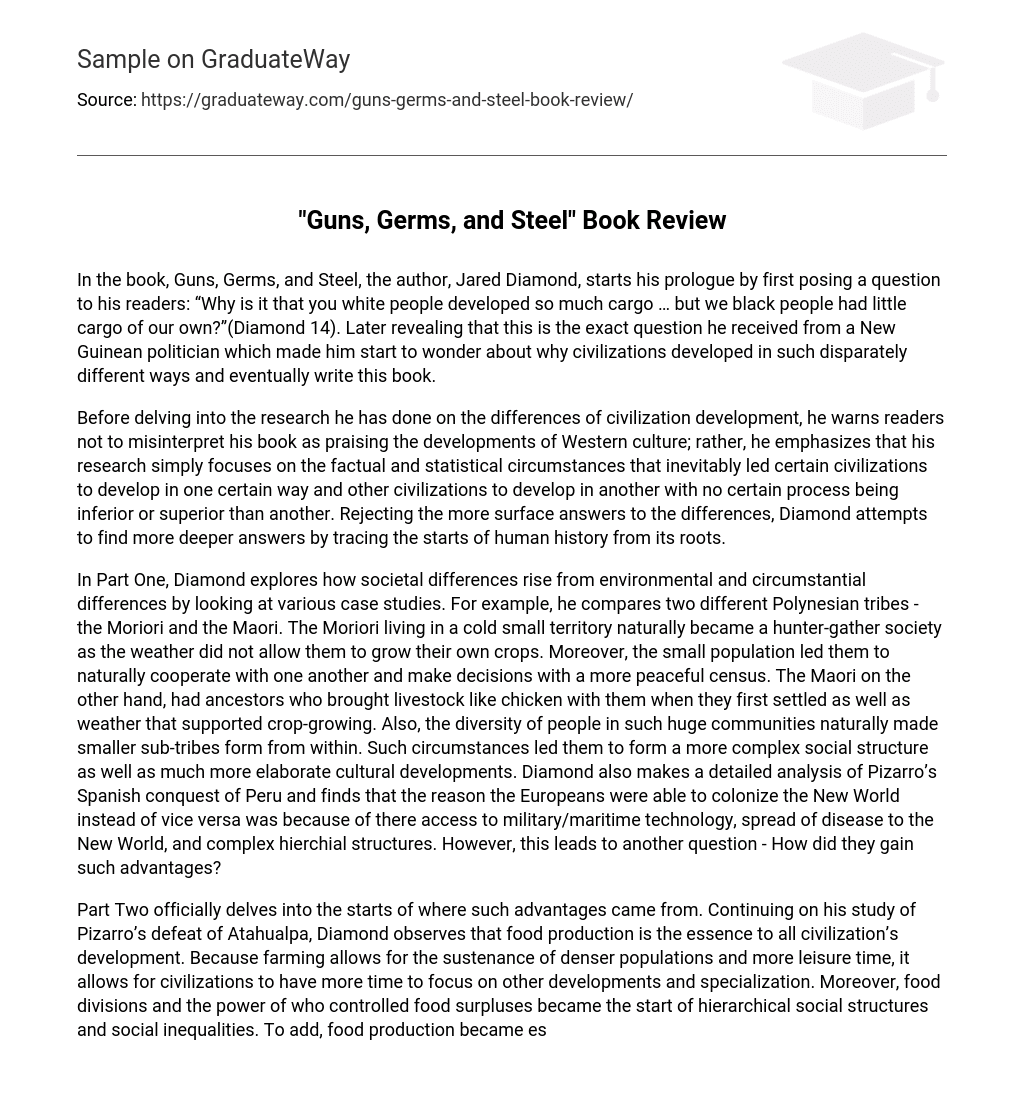In the book, Guns, Germs, and Steel, the author, Jared Diamond, starts his prologue by first posing a question to his readers: “Why is it that you white people developed so much cargo … but we black people had little cargo of our own?”(Diamond 14). Later revealing that this is the exact question he received from a New Guinean politician which made him start to wonder about why civilizations developed in such disparately different ways and eventually write this book.
Before delving into the research he has done on the differences of civilization development, he warns readers not to misinterpret his book as praising the developments of Western culture; rather, he emphasizes that his research simply focuses on the factual and statistical circumstances that inevitably led certain civilizations to develop in one certain way and other civilizations to develop in another with no certain process being inferior or superior than another. Rejecting the more surface answers to the differences, Diamond attempts to find more deeper answers by tracing the starts of human history from its roots.
In Part One, Diamond explores how societal differences rise from environmental and circumstantial differences by looking at various case studies. For example, he compares two different Polynesian tribes – the Moriori and the Maori. The Moriori living in a cold small territory naturally became a hunter-gather society as the weather did not allow them to grow their own crops. Moreover, the small population led them to naturally cooperate with one another and make decisions with a more peaceful census. The Maori on the other hand, had ancestors who brought livestock like chicken with them when they first settled as well as weather that supported crop-growing. Also, the diversity of people in such huge communities naturally made smaller sub-tribes form from within. Such circumstances led them to form a more complex social structure as well as much more elaborate cultural developments. Diamond also makes a detailed analysis of Pizarro’s Spanish conquest of Peru and finds that the reason the Europeans were able to colonize the New World instead of vice versa was because of there access to military/maritime technology, spread of disease to the New World, and complex hierchial structures. However, this leads to another question – How did they gain such advantages?
Part Two officially delves into the starts of where such advantages came from. Continuing on his study of Pizarro’s defeat of Atahualpa, Diamond observes that food production is the essence to all civilization’s development. Because farming allows for the sustenance of denser populations and more leisure time, it allows for civilizations to have more time to focus on other developments and specialization. Moreover, food divisions and the power of who controlled food surpluses became the start of hierarchical social structures and social inequalities. To add, food production became essential for there to be other developments in technology, language, religion, and more. This essentially was why a faster beginning in food production resulted in having the upper hand in the developments of the modern day advantages – guns, germs, and steel.
Regarding food production as a prerequisite of civilization’s development, Jarred Diamond then goes on to explore more proximate causes of disparities between different civilizations rates of development which he points as developments of weaponry, immunity, and other technology. Exploring why at the meeting of European civilizations and the Americas, the devastation that diseases had to each population was so unequal, Diamond finds that it is because of the concept of “crowd disease”.





